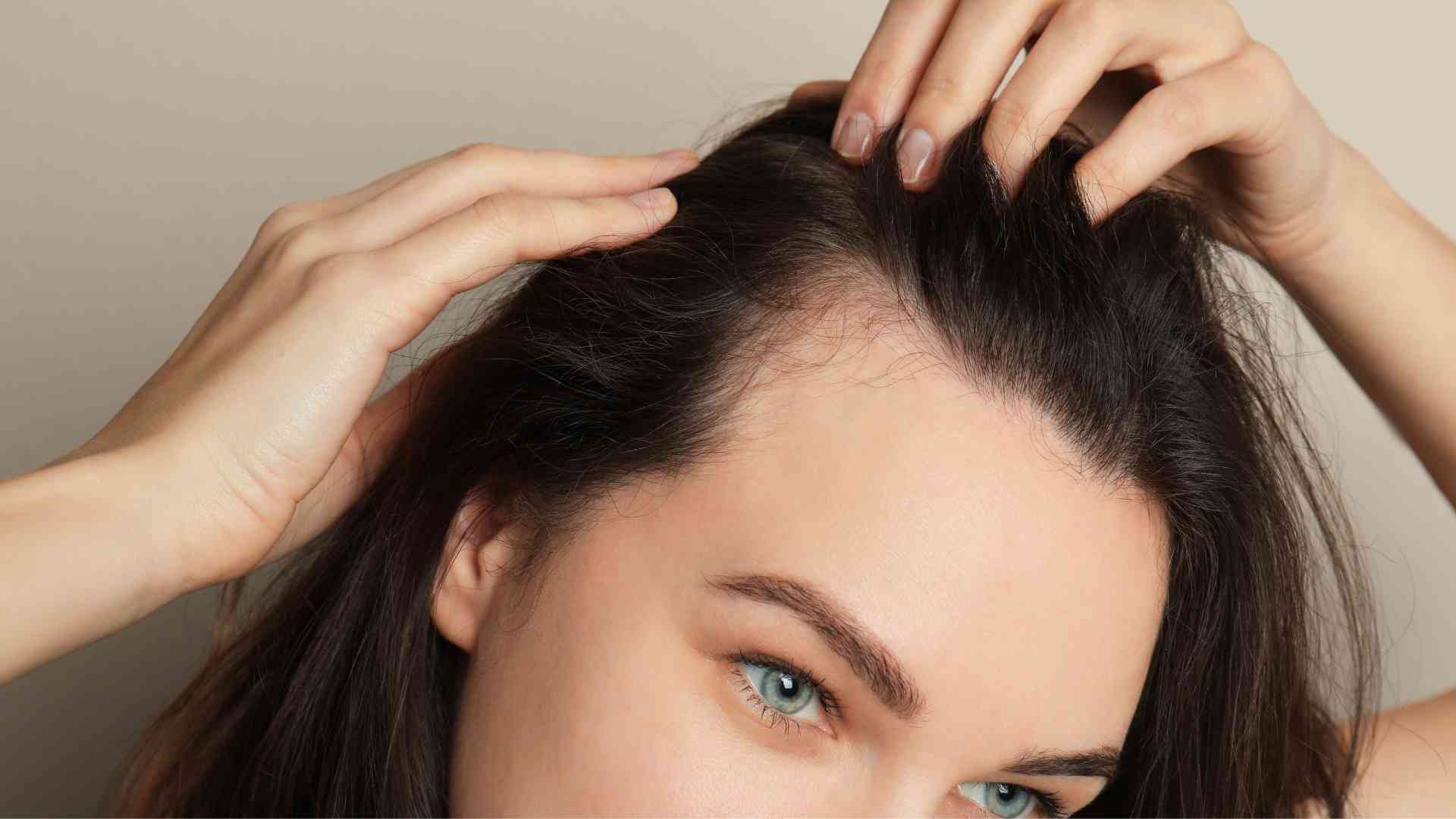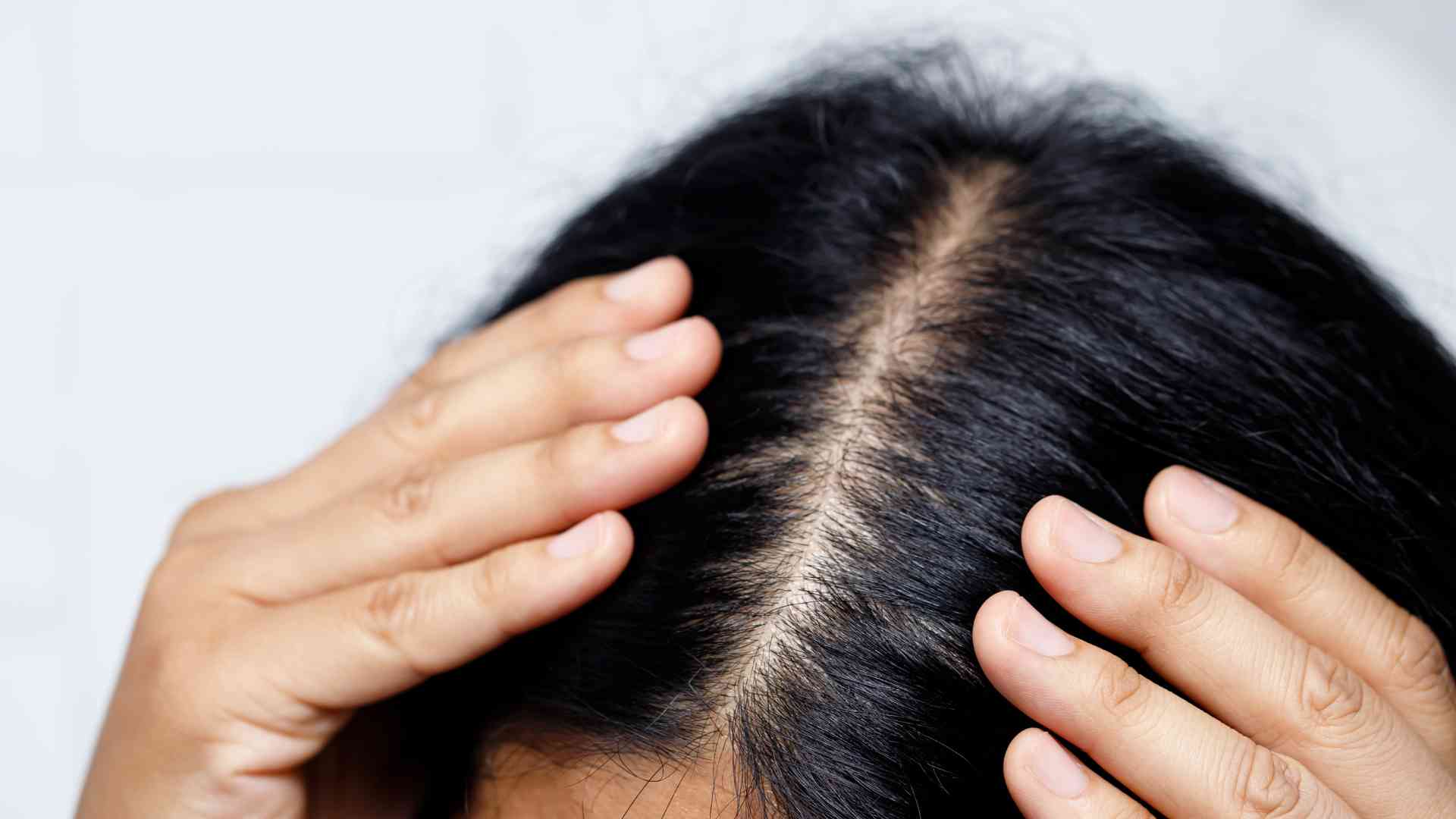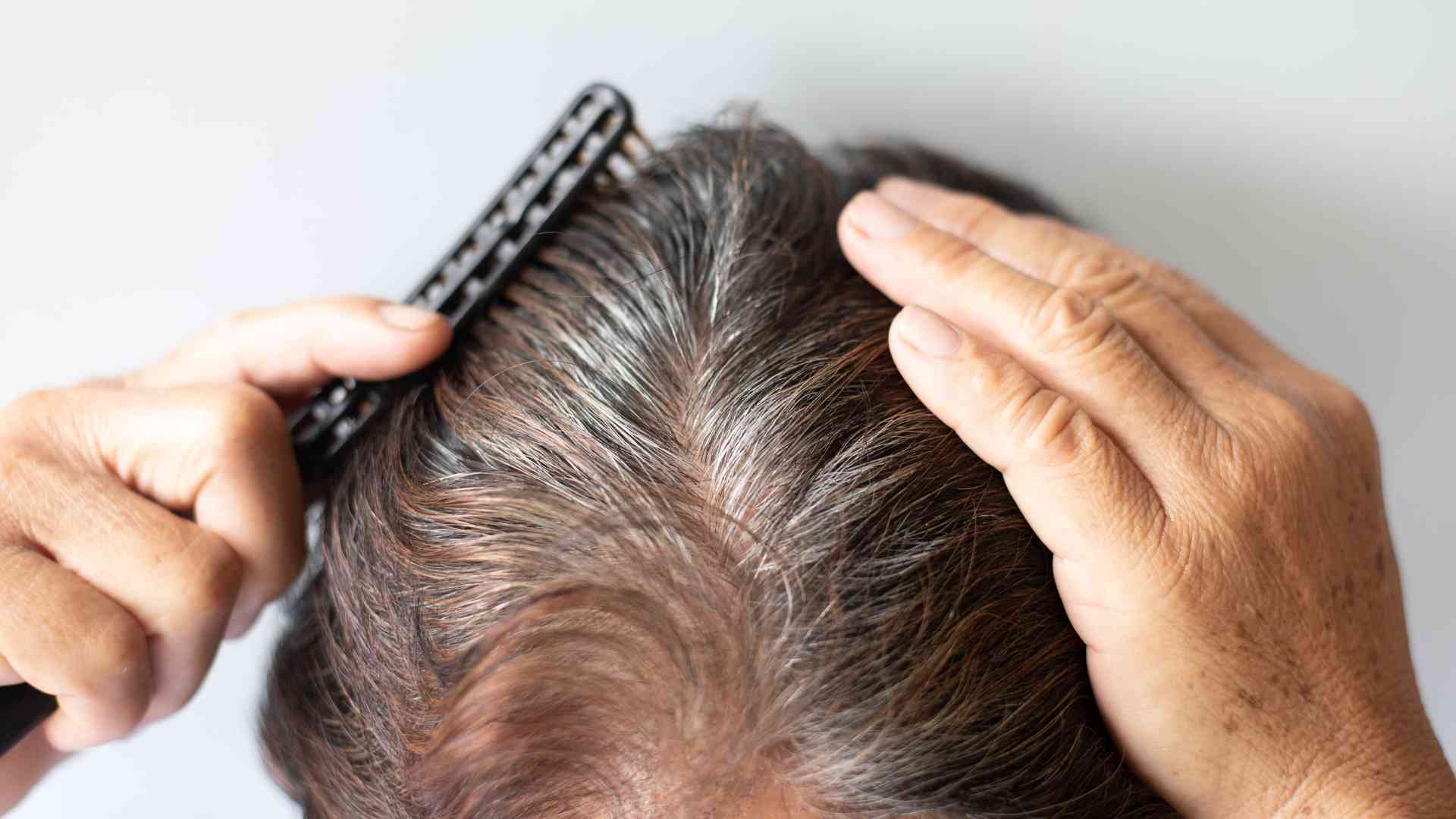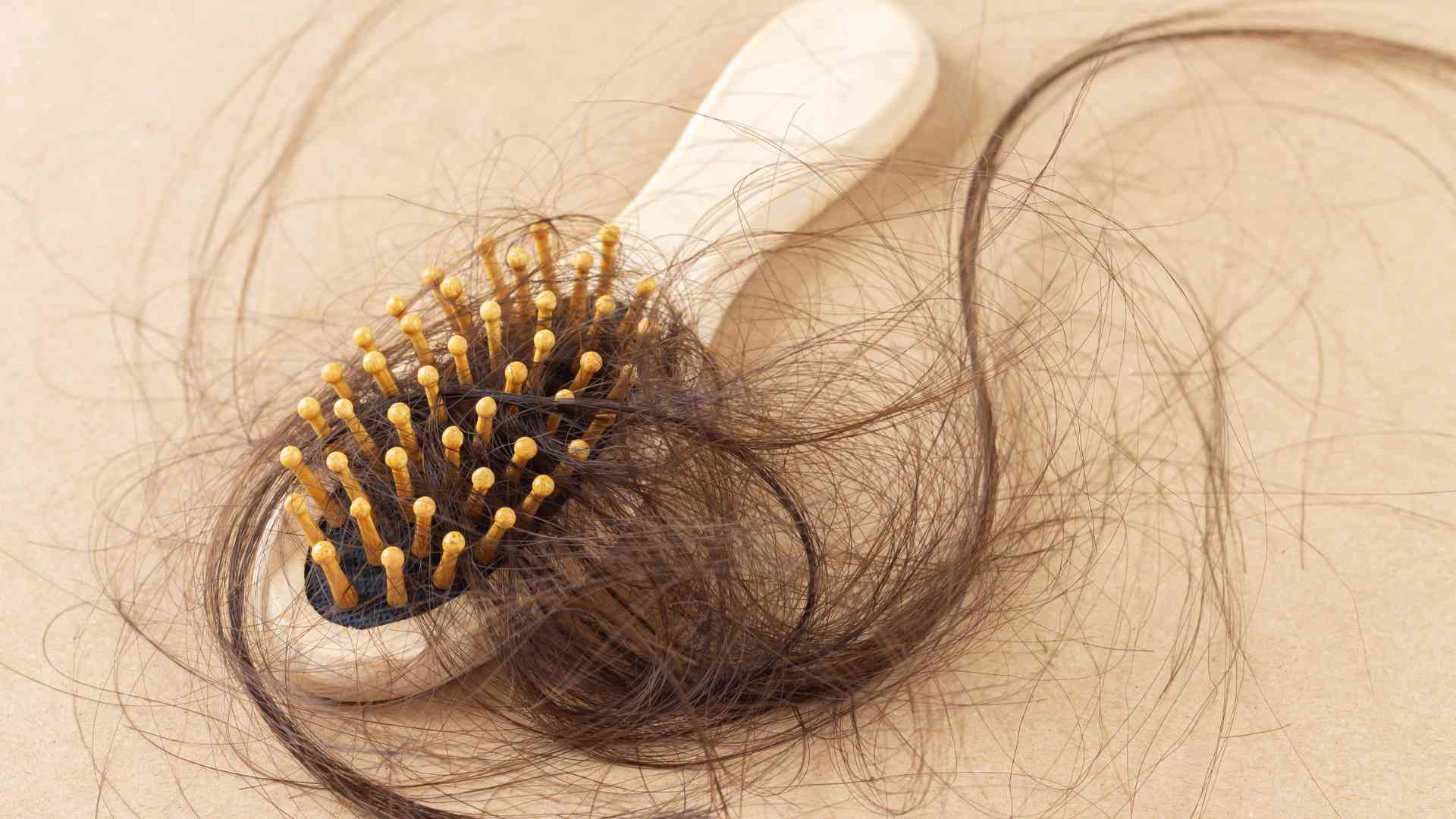The significance of hair transcends its physical presence, intertwining with our self-confidence and identity. Hair loss, a concern that affects countless individuals, can have profound psychological and emotional ramifications. Among the various types of hair loss, traction alopecia emerges as a notable culprit, capturing attention for its unique causes and potential prevention strategies.
Traction alopecia, a distinct form of hair loss, arises not from internal factors but from external forces. It stems from the repeated and prolonged pulling or tension exerted on hair follicles due to tight hairstyles, braids, weaves, extensions, or even constant friction from hats. This type of hair loss can gradually manifest in thinning areas, receding hairlines, and bald patches, often leaving its mark on individuals of diverse backgrounds and hair textures.
In this article, we delve into the complexities of traction alopecia, seeking to unravel the causes that give rise to this condition. Understanding the mechanics behind the tension-induced damage is crucial in formulating effective strategies for both prevention and management. By shedding light on the practices and hairstyles that contribute to traction alopecia, we aim to equip you with the knowledge needed to make informed choices for the health and longevity of your hair. Whether you seek to prevent its onset or address its impact, the exploration of traction alopecia serves as a valuable stepping stone toward fostering hair resilience and maintaining your self-confidence intact.
Defining Traction Alopecia:
Traction alopecia is a distinct and preventable form of hair loss characterized by its direct link to the repeated and sustained tension placed on hair follicles. This condition emerges as a consequence of consistent pulling, tugging, or strain on the hair shafts and their underlying roots. Unlike some other types of hair loss that might result from internal factors or genetics, traction alopecia is primarily a result of external practices and behaviors.
The primary cause of traction alopecia is often associated with certain hairstyles that exert excessive force on the hair. Styles like tight braids, cornrows, dreadlocks, weaves, extensions, and even constant use of tightly-fitting headgear can lead to this condition. The continuous stress placed on the hair follicles interrupts their natural growth cycle, ultimately leading to weakened hair, thinning, and in more severe cases, permanent hair loss.
Recognizing the relationship between specific hairstyles and traction alopecia is crucial in preventing its onset. By understanding the impact of external tension on hair follicles, individuals can make informed decisions about their hairstyling choices, ultimately safeguarding the health and integrity of their hair.
Influence of Hairstyles on the Development of Traction Alopecia
Hairstyles play a pivotal role in the development of traction alopecia, as they directly dictate the degree of tension exerted on hair follicles. Certain styles that involve pulling the hair tightly away from the scalp can lead to chronic stress on the follicles, setting the stage for this specific type of hair loss.
Tight hairstyles are among the primary culprits in the emergence of traction alopecia. Braids, characterized by their woven patterns close to the scalp, often subject hair follicles to consistent tension. Similarly, ponytails and high buns, particularly when secured tightly, pull the hair back and exert pressure on the roots. Cornrows, a style popular for its intricate patterns, also involve braiding hair close to the scalp, thereby placing the follicles under stress. Extensions, including weaves and clip-ins, can add weight and tension to the hair, contributing to gradual follicular damage.
Consistent tension on the hair follicles interrupts their normal growth cycle. The tension can lead to inflammation, decreased blood flow to the follicles, and even microscopic trauma. Over time, the hair follicles weaken, resulting in hair that becomes progressively finer, more brittle, and prone to breaking. If the tension persists, the follicles can become permanently damaged, leading to areas of sparse or even absent hair growth.
Awareness of the relationship between hairstyles and traction alopecia empowers individuals to make informed choices about their hair care practices. Opting for looser styles, allowing the hair to breathe and avoiding constant strain, is essential for minimizing the risk of traction alopecia. Prioritizing the health of hair follicles over trendy but potentially damaging styles can go a long way in preventing this form of hair loss.
Anatomy of Hair Follicles and Their Susceptibility to External Forces
Hair follicles, the tiny structures nestled within the scalp, are at the heart of hair growth and health. Each hair follicle consists of a hair shaft and a bulbous root that extends deep into the skin. These follicles are surrounded by a network of blood vessels and connective tissue that nourish and support their growth.
Constant tension from tight hairstyles can wreak havoc on the delicate balance that sustains hair follicles. When hair is pulled tightly, the blood flow to the follicles can become compromised. Blood vessels are responsible for delivering oxygen and nutrients necessary for hair growth and maintenance. The prolonged tension in traction alopecia disrupts this blood flow, leading to reduced nourishment and oxygen supply to the hair roots.
The decreased blood flow not only weakens the hair shaft but also affects the surrounding structures that anchor the hair in the follicle. Over time, the follicle’s ability to produce strong, healthy hair diminishes. The disruption can lead to hair becoming progressively thinner, more prone to breakage, and eventually, even hair loss.
One crucial aspect of traction alopecia is its often gradual onset. Hair follicles are remarkably resilient and can tolerate a certain degree of tension for a while. However, sustained stress eventually takes its toll, resulting in damage that might become apparent over time. The good news is that traction alopecia is usually reversible if detected early. By recognizing the signs, adjusting hairstyling practices, and allowing the follicles to recover, individuals can restore their hair’s health and prevent permanent damage.
Understanding the science behind hair follicle damage in traction alopecia underscores the importance of making choices that prioritize hair health over temporary style preferences. By being attentive to the well-being of your follicles and adopting hair care practices that minimize tension, you can ensure your hair’s longevity, strength, and vibrant appearance.
Cultural and Societal Factors That Influence Hairstyle Choices

Cultural and societal influences play a significant role in shaping our hairstyle choices. Hairstyles often carry deep cultural meanings, serving as expressions of identity, tradition, and personal aesthetics. However, these preferences can sometimes clash with the health of our hair, leading to a delicate balance between cultural significance and hair well-being.
It’s important to recognize that cultural hairstyles hold immense value, honoring heritage and fostering a sense of belonging. Yet, it’s equally crucial to strike a balance that prioritizes the long-term health of our hair. Tight hairstyles that place constant tension on hair follicles can lead to traction alopecia, jeopardizing not only hair health but also self-esteem.
Finding this equilibrium involves understanding the impact of excessive tension on hair and allowing hair to rest between intricate styles. By varying your hairstyles and occasionally opting for looser, more relaxed options, you give your hair follicles the chance to recover and rejuvenate. Alternating between protective styles, such as braids or weaves, and low-tension styles that allow your hair to breathe, like loose buns or natural hairstyles, can help minimize the risk of traction alopecia.
Ultimately, the key lies in a conscientious approach that respects cultural preferences while safeguarding hair health. By embracing a diverse range of hairstyles and allowing your hair to experience periods of minimal tension, you can celebrate both your identity and your hair’s resilience. Remember, your hair’s well-being is a reflection of the care you extend to it, fostering a harmonious balance between cultural expression and long-term vitality.
Early Signs of Traction Alopecia, Such as Hair Thinning Along the Hairline
Identifying traction alopecia in its early stages is crucial for effective intervention and recovery. One of the earliest signs to watch for is hair thinning along the hairline. This thinning might be more pronounced at the temples or around the forehead, areas commonly subjected to tension from tight hairstyles. The hairline may appear uneven or recede gradually as a result of the damage to hair follicles.
Recognizing these early signs is of paramount importance. The sooner traction alopecia is detected and addressed, the higher the chances of successful recovery. When caught early, steps can be taken to modify hairstyling practices, alleviate tension, and allow the affected hair follicles to heal. Ignoring the signs or delaying action can lead to further damage, potentially resulting in permanent hair loss.
To ensure timely detection, make a habit of conducting regular scalp and hair checks. Pay attention to changes in hair density, texture, and the appearance of thinning areas. These checks empower you to take proactive measures at the first indication of trouble, increasing the likelihood of restoring your hair’s health.
By staying vigilant and responsive to early signs, you can take control of your hair’s well-being and prevent the progression of traction alopecia. Remember, the journey to recovery begins with awareness and the commitment to prioritize your hair’s health.
7 Strategies for Preventing Traction Alopecia
Preventing traction alopecia involves a combination of mindful hairstyling choices and gentle hair care practices. By adopting these strategies, you can minimize the risk of damaging your hair follicles and ensure the health and vitality of your hair:
- Looser Hairstyles: Opt for hairstyles that distribute tension more evenly across your scalp. Looser braids, buns, and ponytails reduce the strain on hair follicles, lessening the likelihood of traction alopecia. Embrace protective styles that maintain a balance between aesthetic appeal and hair health.
- Avoid Excessive Tension: Avoid excessively tight hairstyles that pull the hair back with excessive force. This includes styles like tight cornrows, high ponytails, and extensions that create constant tension on the hair follicles. Prioritize comfort and well-being over extreme tightness.
- Gentle Hair Care Practices: Treat your hair with care to minimize the risk of damage. Use wide-tooth combs or your fingers to detangle hair gently, especially when it’s wet and more susceptible to breakage. Be cautious when brushing or styling, and avoid harsh pulling or tugging.
- Choose Hair Accessories Wisely: Opt for hair accessories that don’t contribute to undue tension. Avoid tight headbands, rubber bands, or clips that grip the hair tightly. Instead, choose accessories that allow your hair to move naturally.
- Rotate Hairstyles: Give your hair follicles a break by alternating between different hairstyles. This variation prevents continuous tension on specific areas, reducing the risk of damage.
- Protective Measures: If you do choose tight hairstyles occasionally, consider protective measures like applying a leave-in conditioner or using silk or satin scrunchies to minimize friction.
- Regular Checks: Regularly monitor your scalp and hair for signs of thinning or discomfort. Early detection allows you to take action promptly.
Preventing traction alopecia requires a proactive and thoughtful approach to hair care. By embracing styles that prioritize hair health, avoiding excessive tension, and practicing gentle hair care habits, you can enjoy a range of hairstyles while safeguarding your hair’s well-being. Remember that a little consideration goes a long way in maintaining the beauty and strength of your locks.
Early Intervention Can Lead to Hair Regrowth

The encouraging news about traction alopecia is that, with early intervention, hair regrowth is possible. Recognizing the signs of traction alopecia and taking action promptly can allow hair follicles to recover and resume their natural growth cycle.
Discontinuing the damaging hairstyles that led to traction alopecia is a critical step in the recovery process. By removing the constant tension on the hair follicles, you provide them with the opportunity to heal and regain their strength. This often involves opting for looser styles and adopting hair care practices that minimize strain on the hair.
In cases where regrowth is slower or the damage is more extensive, additional treatments may be considered. Minoxidil, an FDA-approved topical solution, can be applied to the affected areas to promote hair growth. Platelet-rich plasma (PRP) therapy is another option, involving the injection of a concentrated serum derived from your own blood to stimulate hair follicles.
It’s important to note that recovery varies based on the extent of damage and individual factors. Patience is key, as regrowth takes time. Additionally, preventive measures are crucial even during the recovery phase to prevent reoccurrence of traction alopecia.
In summary, early intervention and discontinuing harmful practices are pivotal in the recovery of hair affected by traction alopecia. With dedication to hair health, adherence to gentler hair care practices, and consideration of potential treatments, you can encourage your hair to regain its strength and vibrancy, showcasing the resilience of hair follicles when given the chance to heal.
Spreading Awareness and Educating Others

Spreading awareness about traction alopecia is a vital endeavor that can have a positive impact on countless individuals’ hair health and self-esteem. By sharing information about this condition, you empower others to make informed choices about their hairstyles and hair care practices, reducing the risk of experiencing the damaging effects of constant tension on hair follicles.
Educating hairstylists about proper hair care practices is equally crucial. Stylists play a pivotal role in shaping their clients’ hair experiences. By ensuring that hairstylists are knowledgeable about the causes and prevention of traction alopecia, you enable them to provide guidance and recommendations that prioritize hair health without compromising on style.
Additionally, educating friends, family, and peers creates a ripple effect of informed decision-making. Collective efforts in promoting gentle hair care practices, varying hairstyles, and allowing hair to rest can contribute to a cultural shift towards healthier hair practices. This, in turn, reduces the prevalence of traction alopecia and supports a community that values both style and hair well-being.
In conclusion, raising awareness and educating others about traction alopecia can transform lives by preserving hair health and self-confidence. By disseminating knowledge and encouraging thoughtful practices, you become a catalyst for positive change, paving the way for a future where beautiful, strong hair is celebrated without sacrificing its well-being.
Watch What is traction alopecia and can it be reversed? | Video
Top 5 FAQs and answers related to What is traction alopecia and what causes it
What is traction alopecia?
Traction alopecia is a form of hair loss that occurs due to continuous and excessive tension placed on the hair follicles. It’s commonly caused by tight hairstyles, such as braids, ponytails, and extensions, that pull on the hair and strain the follicles.
What causes traction alopecia?
Traction alopecia is primarily caused by hairstyles that create tension on the hair follicles. Tight braids, ponytails, cornrows, weaves, and extensions are examples of styles that contribute to this condition. The constant pulling and strain on the hair follicles disrupt their natural growth cycle and can lead to weakened hair, thinning, and even bald patches.
Are there specific groups more susceptible to traction alopecia?
Traction alopecia can affect anyone who consistently wears tight hairstyles, regardless of their hair type or ethnicity. However, individuals with curly or coiled hair textures might be more susceptible due to the structural characteristics of their hair.
Is traction alopecia reversible?
Yes, traction alopecia is usually reversible if detected and addressed early. By discontinuing the tight hairstyles and allowing the affected hair follicles to recover, hair regrowth is possible. However, if the condition progresses and the damage becomes permanent, full regrowth may not occur.
Can traction alopecia lead to permanent hair loss?
In some cases, if the tension on the hair follicles persists over an extended period, it can lead to permanent damage and permanent hair loss in the affected areas. This is why early detection and intervention are crucial to prevent the condition from progressing to a point of irreversibility.
Conclusion

In delving into the intricate world of hair care, we’ve uncovered the distinct concern of traction alopecia—a form of hair loss that stems from the strain of tight hairstyles on hair follicles. We’ve explored how these constant tensions disrupt the natural growth cycle, leading to weakened hair, thinning, and potential baldness. It’s a reminder that beauty and health are intertwined, and the choices we make about our hair have a profound impact on its vitality.
To safeguard the health of our locks, it’s imperative that we approach hairstyle choices with care. While cultural preferences and societal influences are significant, striking a balance between style and hair well-being is paramount. The journey to prevention and recovery begins with recognizing the early signs of traction alopecia—hair thinning along the hairline—and promptly discontinuing the practices that cause it. By doing so, we give our hair follicles a chance to heal and regrow.
As we bid adieu, let us not forget the power we hold in our hands to ensure the vibrancy of our hair. Prioritizing hair health requires making informed choices about the hairstyles we embrace. By adopting gentler practices, allowing our hair to rest between styles, and advocating for collective awareness, we contribute to a community that values both cultural expression and the well-being of our precious strands. Remember, early recognition and hair-friendly practices are our allies in the fight against traction alopecia, ensuring that our hair remains a testament to strength, beauty, and the choices we make in its care.
Please share this What Is Traction Alopecia and What Causes It? with your friends and do a comment below about your feedback.
We will meet you on next article.
Until you can read, What Is Telogen Effluvium and What Causes It?
